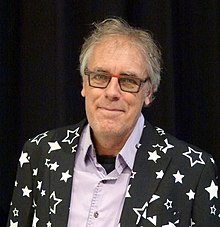
Govert Schilling (born 30 November 1956) is a Dutch popular science writer and amateur astronomer.

Govert Schilling (born 30 November 1956) is a Dutch popular science writer and amateur astronomer.
Schilling was born in Meerkerk. In 1982, he became the program leader at the former Zeiss Planetarium, Amsterdam.
From 1987 to 1998 he was also a part-time appointee as a program leader at the Artis Planetarium in Amsterdam.
He has extensively written for the Sky & Telescope magazine [1] and Science. [2]
The asteroid 10986 Govert is named after him. [3]
He is the author of a number of bestselling books. [4]
He has frequently collaborated with Lars Lindberg Christensen.
Orphans of the Sky is a science fiction novel by American writer Robert A. Heinlein, consisting of two parts: "Universe" and its sequel, "Common Sense". The two novellas were first published together in book form in 1963. "Universe" was also published separately in 1951 as a 10¢ Dell paperback. The work presents one of the earliest fictional depictions of a generation ship.
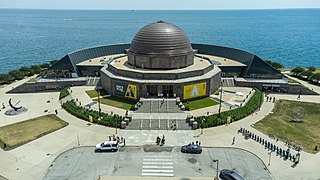
The Adler Planetarium is a public museum in Chicago, Illinois, dedicated to astronomy and astrophysics. It was founded in 1930 by local businessman Max Adler. Located on the northeastern tip of Northerly Island on Lake Michigan, the Adler Planetarium was the first planetarium in the United States. It is part of Chicago's Museum Campus, which includes the John G. Shedd Aquarium and The Field Museum. The Planetarium's mission is to inspire exploration and understanding of the universe.
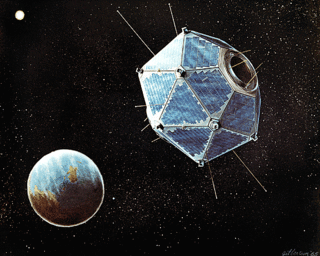
Vela was the name of a group of satellites developed as the Vela Hotel element of Project Vela by the United States to detect nuclear detonations to monitor compliance with the 1963 Partial Test Ban Treaty by the Soviet Union.
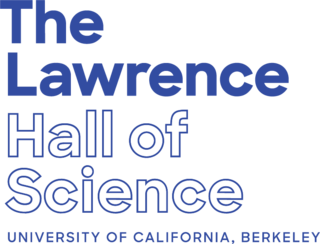
The Lawrence Hall of Science is a public science center in Berkeley, California that offers hands-on science exhibits, designs curriculum, aids professional development, and offers after school science resources to students of all ages. The Lawrence was established in 1968 in honor of physicist Ernest Orlando Lawrence (1901–1958), the University of California's first Nobel laureate. The center is located in the hills above the University of California, Berkeley campus, less than a mile uphill from the University's Botanical Garden.
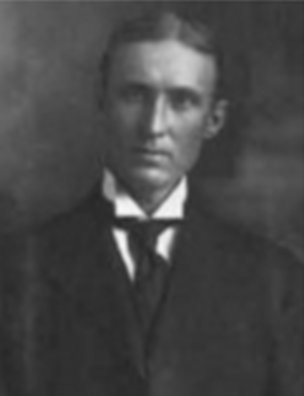
Carl Otto Lampland was an American astronomer. He was involved with both of the Lowell Observatory solar system projects, observations of the planet Mars and the search for Planet X.
The Indian Astronomical Observatory (IAO) is a high-altitude astronomy station located in Hanle, India and operated by the Indian Institute of Astrophysics. Situated in the Western Himalayas at an elevation of 4,500 meters (14,764 ft), the IAO is one of the world's highest located sites for optical, infrared and gamma-ray telescopes. It is currently the tenth (see List of highest astronomical observatories) highest optical telescope in the world. It is India's first dark-sky preserve.

The William M. Staerkel Planetarium is a planetarium at Parkland College in Champaign, Illinois. It is the second largest planetarium in the state, the largest being the Adler Planetarium in Chicago, and has the first Carl Zeiss M1015 opto-mechanical star projector installed in the western hemisphere. The Staerkel Planetarium provides science education programs and light show entertainment to as many as 40,000 people each year. It has a 50-foot dome, seats 144, and private group and school show reservations can be made beyond the regular public offerings.

Bernardus Wilhelmus Maria "Bert" van Sprang was the founder of the Dutch youth division of the Dutch association of meteorology and astronomy in 1967. Activities carried out by Van Sprang for the JWG included the organization of astro camps, the setting up of a program to build telescopes cheaply, and the writing of many booklets on astronomy topics. He was also program leader of the planetarium in The Hague until it was destroyed by fire in February 1976. The main-belt asteroid 3098 van Sprang was named after him.

Neil deGrasse Tyson is an American astrophysicist, author, and science communicator. Tyson studied at Harvard University, the University of Texas at Austin, and Columbia University. From 1991 to 1994, he was a postdoctoral research associate at Princeton University. In 1994, he joined the Hayden Planetarium as a staff scientist and the Princeton faculty as a visiting research scientist and lecturer. In 1996, he became director of the planetarium and oversaw its $210 million reconstruction project, which was completed in 2000. Since 1996, he has been the director of the Hayden Planetarium at the Rose Center for Earth and Space in New York City. The center is part of the American Museum of Natural History, where Tyson founded the Department of Astrophysics in 1997 and has been a research associate in the department since 2003.
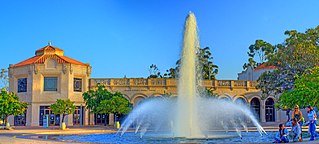
The Fleet Science Center is a science museum and planetarium in Balboa Park, located in San Diego, California. It is at the east end of the El Prado Drive walkway, next to the Bea Evenson Fountain and plaza in central Balboa Park.
Antoine Émile Henry Labeyrie is a French astronomer, who held the Observational astrophysics chair at the Collège de France between 1991 and 2014, where he is currently professor emeritus. He is working with the Hypertelescope Lise association, which aims to develop an extremely large astronomical interferometer with spherical geometry that might theoretically show features on Earth-like worlds around other suns, as its president. He is a member of the French Academy of Sciences in the Sciences of the Universe section. Between 1995 and 1999 he was director of the Haute-Provence Observatory.

Edwin Charles Krupp is an American astronomer, researcher, author, and popularizer of science. He is an internationally recognized expert in the field of archaeoastronomy, the study of how ancient cultures viewed the sky and how those views affected their cultures. He has taught at the college level, as a planetarium lecturer, and in various documentary films. He has been the director of the Griffith Observatory in Los Angeles since first taking over the position in 1974 after the departure of the previous director, William J. Kaufmann III. His writings include science papers and journal articles, astronomy magazine articles, books on astronomy and archaeoastronomy for adults, and books explaining sky phenomena and astronomy to children.
GRB 971214 is a gamma-ray burst observed in 1997. It originated 12 billion light years away. For a brief period this was thought by some researchers to have been the most energetic event observed in the universe, but this was before it was established that gamma-ray bursts are beamed towards the Earth. Thus, at the time of the discovery it was hypothesized by G. Djorgovski and his collaborators that the outburst put out more energy than several hundred typical supernovae, or the energy our galaxy puts out over a couple of centuries. However, a couple of years later it was realized that this was an upper limit as it is likely that the burst was directed towards Earth. If the jet had an opening angle of only a few degrees, the burst energy could have been thousands of times lower. The X-ray afterglow and the host galaxy of the GRB have also been observed, using BeppoSAX and Keck II respectively. The host galaxy lies at redshift z=3.4.

Nicolaas Govert "Dick"de Bruijn was a Dutch mathematician, noted for his many contributions in the fields of analysis, number theory, combinatorics and logic.

The Boonshoft Museum of Discovery is a children's museum, science and technology center and zoo in Dayton, Ohio, United States that focuses on science and natural history. Exhibits include an extensive natural history collection as well as maintaining a collection of live animals native to Ohio and abroad. Educational outreach extends to the community by providing in-school programming and on-site special programs. SunWatch Indian Village and Fort Ancient are the sister sites to the museum.

The International Year of Astronomy (IYA2009) was a year-long celebration of astronomy that took place in 2009 to coincide with the 400th anniversary of the first recorded astronomical observations with a telescope by Galileo Galilei and the publication of Johannes Kepler's Astronomia nova in the 17th century. The Year was declared by the 62nd General Assembly of the United Nations. A global scheme, laid out by the International Astronomical Union (IAU), was also endorsed by UNESCO, the UN body responsible for educational, scientific, and cultural matters.
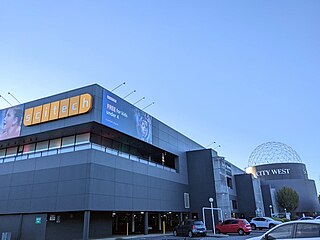
Scitech is a not-for-profit company operating as the Scitech Science Centre, a permanent, interactive science museum which includes a planetarium in West Perth, Western Australia.
Marcus Chown is a science writer, journalist and broadcaster, currently cosmology consultant for New Scientist magazine.

WorldWide Telescope (WWT) is an open-source set of applications, data and cloud services, originally created by Microsoft Research but now an open source project hosted on GitHub. The .NET Foundation holds the copyright and the project is managed by the American Astronomical Society and has been supported by grants from the Moore Foundation and National Science Foundation. WWT displays astronomical, earth and planetary data allowing visual navigation through the 3-dimensional (3D) Universe. Users are able to navigate the sky by panning and zooming, or explore the 3D universe from the surface of Earth to past the Cosmic microwave background (CMB), viewing both visual imagery and scientific data about that area and the objects in it. Data is curated from hundreds of different data sources, but its open data nature allows users to explore any third party data that conforms to a WWT supported format. With the rich source of multi-spectral all-sky images it is possible to view the sky in many wavelengths of light. The software utilizes Microsoft's Visual Experience Engine technologies to function. WWT can also be used to visualize arbitrary or abstract data sets and time series data.
Enrico Costa is an Italian astrophysicist, known for studies of gamma ray bursts (GRBs).